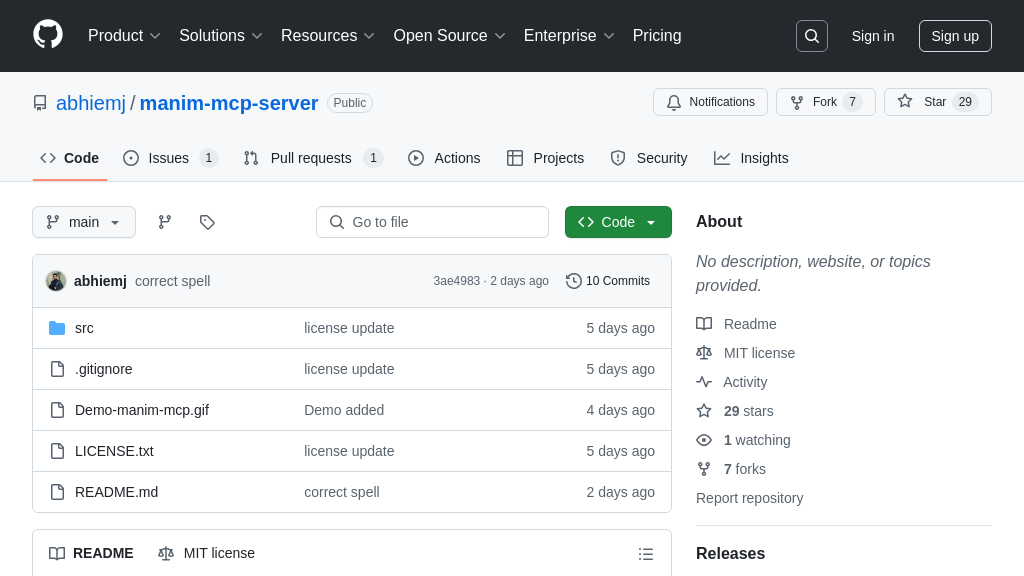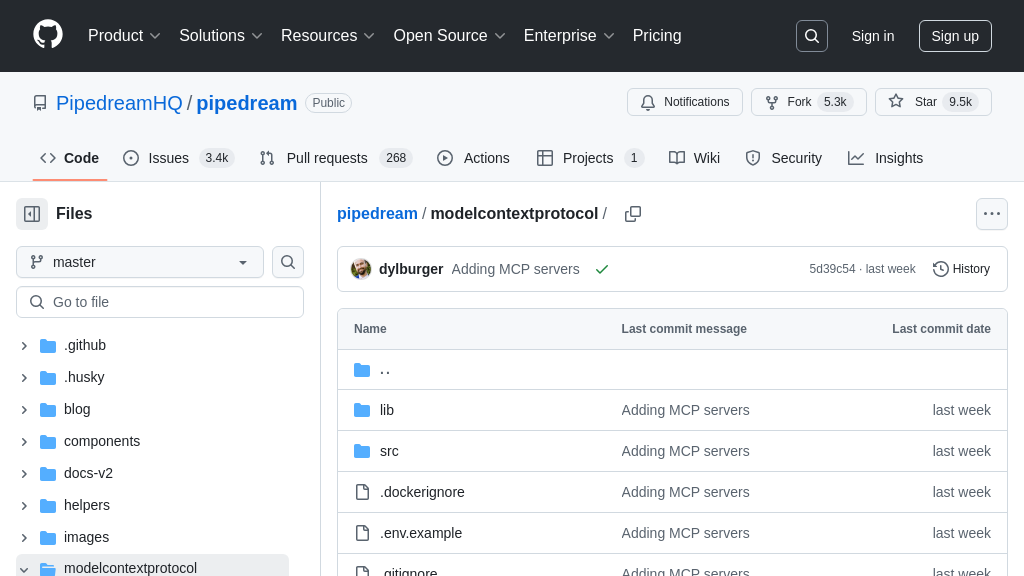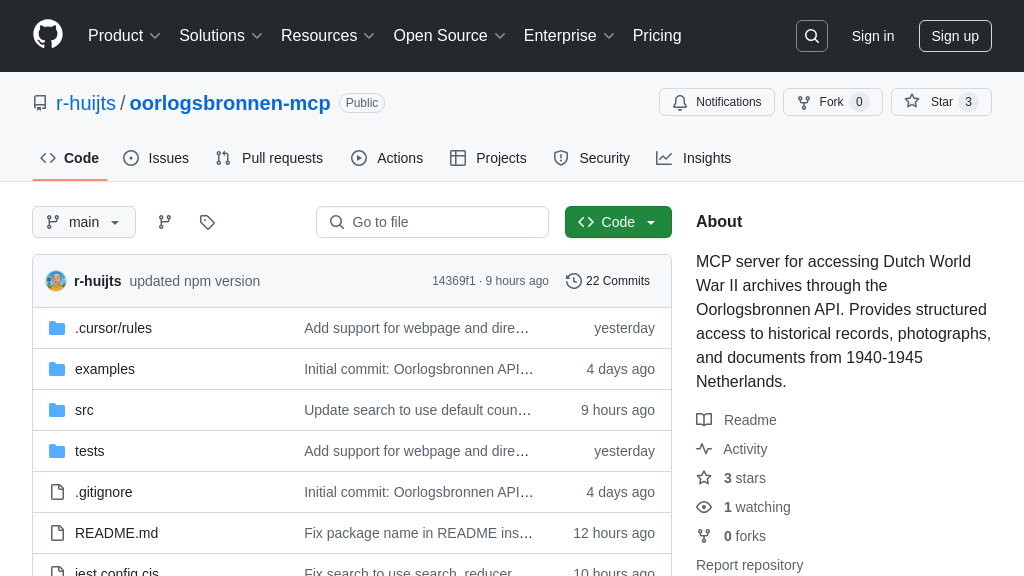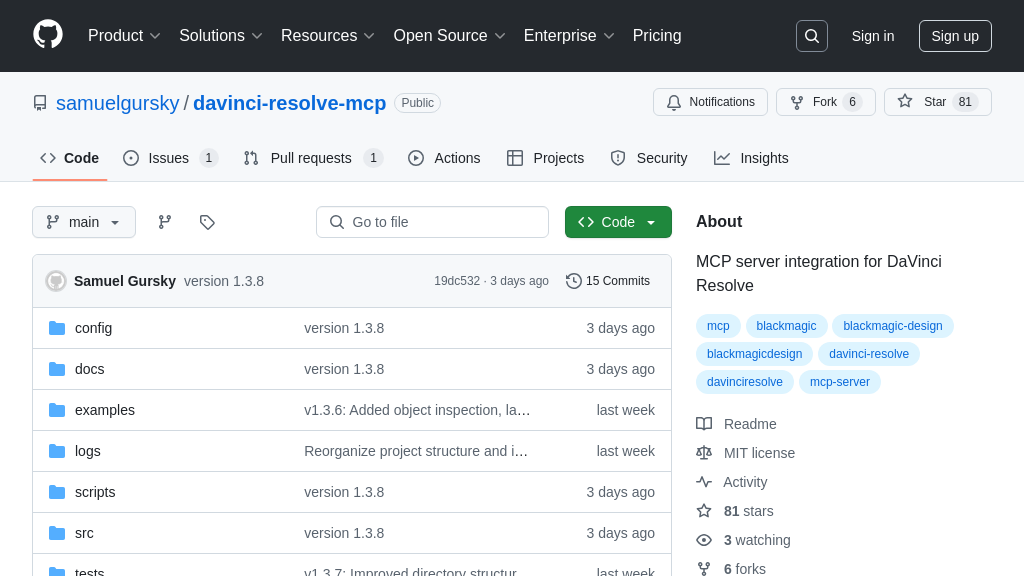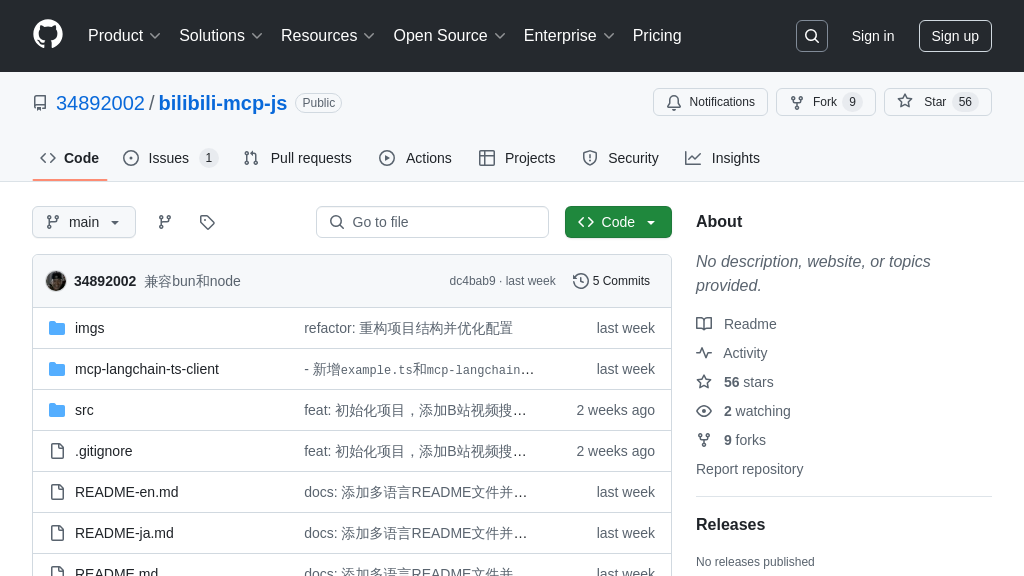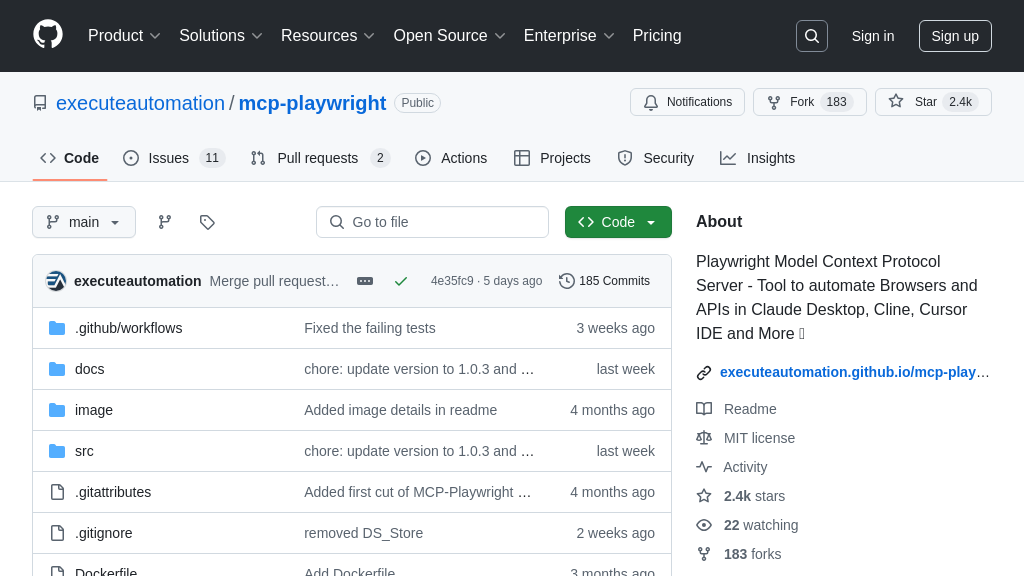postman-mcp-server
Postman MCP Server: Integrates Postman API with AI models for automated collection and environment management.
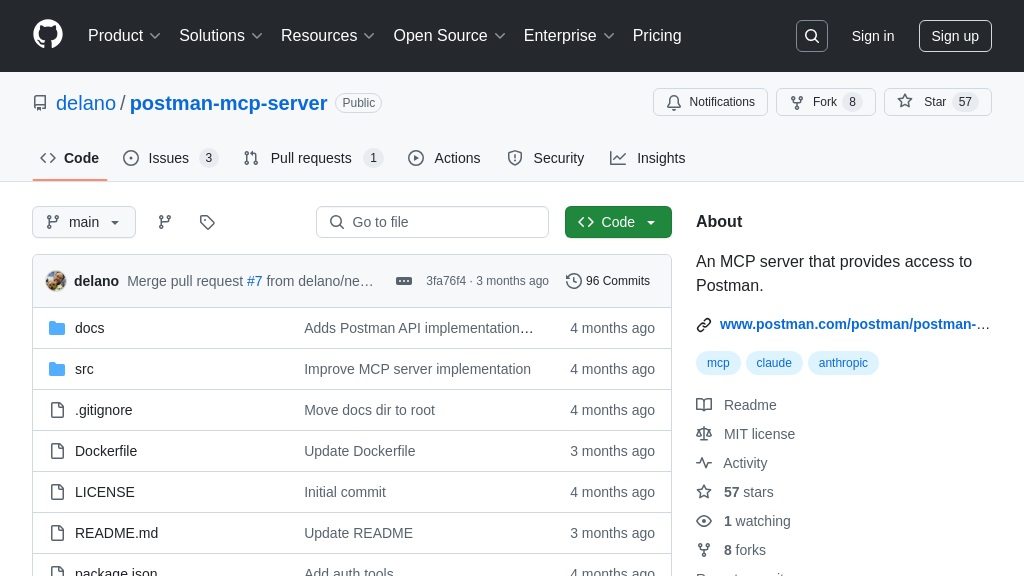
postman-mcp-server Solution Overview
The Postman MCP Server is a TypeScript-based MCP server designed to seamlessly integrate Postman's powerful API management capabilities with AI models. It provides comprehensive CRUD operations for Postman collections, environments, and APIs, enabling AI agents to manage and interact with your API landscape. Features include folder and request management, version control, API schema support, and API key authentication.
This server empowers developers to automate API testing workflows, maintain API documentation, and manage environments through AI-driven automation. By leveraging the Postman API, it allows AI models to create, modify, and orchestrate complex API interactions, enhancing the efficiency and reliability of API-related tasks. Installation is streamlined via Smithery or manual setup, and it integrates smoothly with Claude Desktop and Cline. The Postman MCP Server unlocks the potential for AI to revolutionize API management, offering a structured and safe interaction layer for complex operations.
postman-mcp-server Key Capabilities
Collection Management via MCP
The Postman MCP Server provides a standardized interface for managing Postman collections through the Model Context Protocol. This allows AI models to programmatically create, retrieve, update, and delete collections, as well as manage folders, requests, and responses within them. The server leverages the Postman API, abstracting away the complexities of direct API interaction and providing a consistent interface for AI models. This enables AI agents to automate tasks such as setting up test suites, organizing API calls, and managing API documentation directly within Postman.
For example, an AI model could use this functionality to automatically generate a Postman collection from an OpenAPI specification, populate it with example requests, and then use it to test the API's functionality. This streamlines the API development and testing process, allowing developers to focus on building the API itself. The version control features, such as forking and merging, also allow AI models to manage different versions of collections and collaborate with human developers.
Technically, this is achieved by implementing MCP handlers that translate MCP requests into Postman API calls. The server uses TypeScript to ensure type safety and leverages the OpenAPI specification to generate the necessary code for interacting with the Postman API.
Environment Management via MCP
This feature allows AI models to manage Postman environments through the MCP. AI models can create, retrieve, update, and delete environments, enabling dynamic configuration of API testing and development workflows. This is particularly useful for managing different deployment stages (development, staging, production) or varying configurations for different users or teams. By abstracting environment management behind the MCP, AI models can seamlessly switch between different configurations without requiring manual intervention.
Imagine an AI agent automatically configuring a Postman environment for a specific testing scenario, setting variables such as API keys, URLs, and other configuration parameters. This allows for automated testing across different environments, ensuring that the API behaves as expected in each context. Furthermore, the AI could automatically update the environment variables based on the results of previous tests, optimizing the testing process.
The implementation involves creating MCP handlers that map to the Postman API's environment management endpoints. These handlers translate MCP requests into the appropriate API calls, handling authentication and error handling.
API Management via MCP
The Postman MCP Server enables AI models to manage APIs within Postman, including creating, retrieving, updating, and deleting API definitions. This includes managing API schemas with multi-file support, adding and managing tags for APIs, and adding and managing comments on APIs. This feature allows AI models to automate the process of documenting and organizing APIs within Postman, ensuring that API definitions are up-to-date and easily accessible.
For instance, an AI model could automatically update the API definition in Postman whenever the underlying API code changes, ensuring that the documentation always reflects the current state of the API. The AI could also use the tagging feature to categorize APIs based on their functionality or ownership, making it easier to find and manage them. The comment management feature allows AI models to add explanations and context to API definitions, improving collaboration and understanding.
The technical implementation involves creating MCP handlers that interact with the Postman API's API management endpoints. These handlers handle the complexities of managing API schemas, tags, and comments, providing a simplified interface for AI models.
Authentication and Authorization
The Postman MCP Server incorporates robust authentication and authorization mechanisms to ensure secure access to Postman resources. It supports API key authentication, allowing AI models to securely access the Postman API using API keys. Additionally, it implements role-based access control, enabling fine-grained management of permissions at the workspace and collection levels. This ensures that AI models only have access to the resources they need, minimizing the risk of unauthorized access or modification. Workspace permissions allow defining permissions specific to workspaces, further enhancing security.
Consider a scenario where an AI model needs to access a specific Postman collection to run tests. The API key authentication mechanism ensures that the AI model is authorized to access the Postman API. The role-based access control mechanism can then be used to grant the AI model read-only access to the specific collection, preventing it from making any unauthorized changes.
The implementation involves integrating with the Postman API's authentication and authorization mechanisms. The server validates API keys and enforces role-based access control policies, ensuring that all requests are properly authenticated and authorized.
Integration Advantages
The Postman MCP Server offers significant integration advantages within the MCP ecosystem. By providing a standardized interface for interacting with the Postman API, it enables seamless integration with other MCP-compatible tools and services. This allows AI models to orchestrate complex workflows involving multiple tools and services, such as automatically generating Postman collections from OpenAPI specifications, running tests, and then using the results to update API documentation. The server's support for multiple transport mechanisms, including standard input/output and HTTP/SSE, further enhances its integration capabilities.
For example, an AI model could use the Postman MCP Server in conjunction with a code generation tool to automatically generate API client code from an OpenAPI specification, create a Postman collection for testing the API, and then run the tests to verify the generated code. This end-to-end workflow can be fully automated, significantly reducing the time and effort required to develop and test APIs. The MCP's standardized interface ensures that these different tools and services can seamlessly interoperate, regardless of their underlying implementation details.
